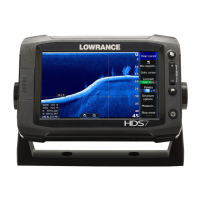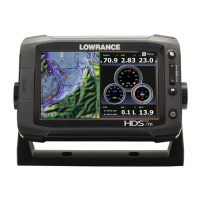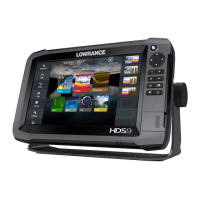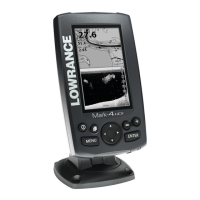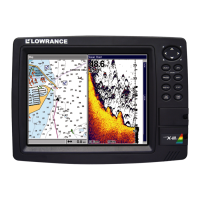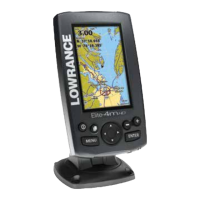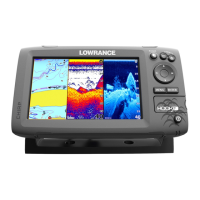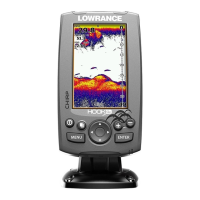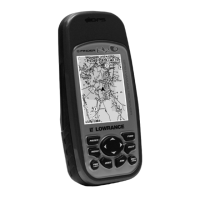Basic operation Page: 11 The power key Explains the functions of the power key for turning the unit on/off, standby, and adjusting brightness.
Using the touchscreen Describes general touchscreen operations like tapping, pressing, and dragging for navigation and interaction.
Menus Details how to navigate and interact with menus, including selection, check boxes, and slider bars.
Dialog boxes Explains how to interact with dialog boxes, select fields, use keyboards, and close dialogs.
Screen capture Explains how to take screenshots of the unit's display for saving or sharing.
Chart Page: 21 The Chart page Introduces the chart page's functionality for displaying position, planning routes, and overlaying data.
Vessel symbol Explains the vessel symbol's appearance and how it indicates position and heading based on sensor input.
Chart scale Describes how to use the zoom keys to adjust the chart scale and view map details.
Zooming Details the process of zooming in and out on the chart using onscreen or dedicated keys.
Chart options Covers various chart display options, including orientation, 3D views, and detail levels.
Orientation Explains chart orientation settings like North Up, Heading Up, and Course Up for optimal viewing.
3 D Describes how to toggle between 2D and 3D chart views and their respective options.
Navionics chart options Details settings specific to Navionics charts, including 3D views, synchronization, and shading.
Navionics settings Explains optional settings for Navionics charts such as colored seabed areas, annotation, and presentation types.
Sonar Page: 43 Zooming Details how to use zoom keys to magnify the water column view and display specific depth ranges.
Sonar menu Covers sonar settings like range, frequency, and advanced options for optimal performance.
Advanced Explains advanced sonar settings including noise rejection, surface clarity, and scroll speed.
Sensitivity Details how to adjust sensitivity for optimal display detail, including auto sensitivity.
Sonar settings Covers network sonar configuration, sonar sources, and other network-related settings.
Fishing modes Explains preset sonar settings packages designed for specific fishing conditions.
Using the radar (optional) Page: 83 Radar operation modes Details the radar's operational modes: Off, Standby, and Transmit for controlling scanner activity.
Adjusting range Explains how to adjust the radar range using touchscreen or dedicated zoom keys.
Radar menu Covers radar menu options when the cursor is active, including gain, clutter, and interference adjustments.
Gain Explains radar gain control for receiver sensitivity, with manual and automatic modes.
Sea clutter Details sea clutter filtering to reduce interference from waves and rough water.
Radar orientation Explains radar orientation settings: Heading Up, North Up, and Course Up for display alignment.
MARPA Describes the Mini Automatic Radar Plotting Aid (MARPA) function for tracking targets and collision avoidance.
Vessel alarm settings Covers defining vessel alarms for target proximity, lost targets, and message reception.
Radar overlay Explains how to overlay radar images on chart views for correlating targets with charted objects.
Radar installation menu Guides on setting up and configuring the Broadband radar, including bearing alignment and range offset.
Basic operation Page: 11 The power key Explains the functions of the power key for turning the unit on/off, standby, and adjusting brightness.
Using the touchscreen Describes general touchscreen operations like tapping, pressing, and dragging for navigation and interaction.
Menus Details how to navigate and interact with menus, including selection, check boxes, and slider bars.
Dialog boxes Explains how to interact with dialog boxes, select fields, use keyboards, and close dialogs.
Screen capture Explains how to take screenshots of the unit's display for saving or sharing.
Chart Page: 21 The Chart page Introduces the chart page's functionality for displaying position, planning routes, and overlaying data.
Vessel symbol Explains the vessel symbol's appearance and how it indicates position and heading based on sensor input.
Chart scale Describes how to use the zoom keys to adjust the chart scale and view map details.
Zooming Details the process of zooming in and out on the chart using onscreen or dedicated keys.
Chart options Covers various chart display options, including orientation, 3D views, and detail levels.
Orientation Explains chart orientation settings like North Up, Heading Up, and Course Up for optimal viewing.
3 D Describes how to toggle between 2D and 3D chart views and their respective options.
Navionics chart options Details settings specific to Navionics charts, including 3D views, synchronization, and shading.
Navionics settings Explains optional settings for Navionics charts such as colored seabed areas, annotation, and presentation types.
Sonar Page: 43 Zooming Details how to use zoom keys to magnify the water column view and display specific depth ranges.
Sonar menu Covers sonar settings like range, frequency, and advanced options for optimal performance.
Advanced Explains advanced sonar settings including noise rejection, surface clarity, and scroll speed.
Sensitivity Details how to adjust sensitivity for optimal display detail, including auto sensitivity.
Sonar settings Covers network sonar configuration, sonar sources, and other network-related settings.
Fishing modes Explains preset sonar settings packages designed for specific fishing conditions.
Using the radar (optional) Page: 83 Radar operation modes Details the radar's operational modes: Off, Standby, and Transmit for controlling scanner activity.
Adjusting range Explains how to adjust the radar range using touchscreen or dedicated zoom keys.
Radar menu Covers radar menu options when the cursor is active, including gain, clutter, and interference adjustments.
Gain Explains radar gain control for receiver sensitivity, with manual and automatic modes.
Sea clutter Details sea clutter filtering to reduce interference from waves and rough water.
Radar orientation Explains radar orientation settings: Heading Up, North Up, and Course Up for display alignment.
MARPA Describes the Mini Automatic Radar Plotting Aid (MARPA) function for tracking targets and collision avoidance.
Vessel alarm settings Covers defining vessel alarms for target proximity, lost targets, and message reception.
Radar overlay Explains how to overlay radar images on chart views for correlating targets with charted objects.
Radar installation menu Guides on setting up and configuring the Broadband radar, including bearing alignment and range offset.
